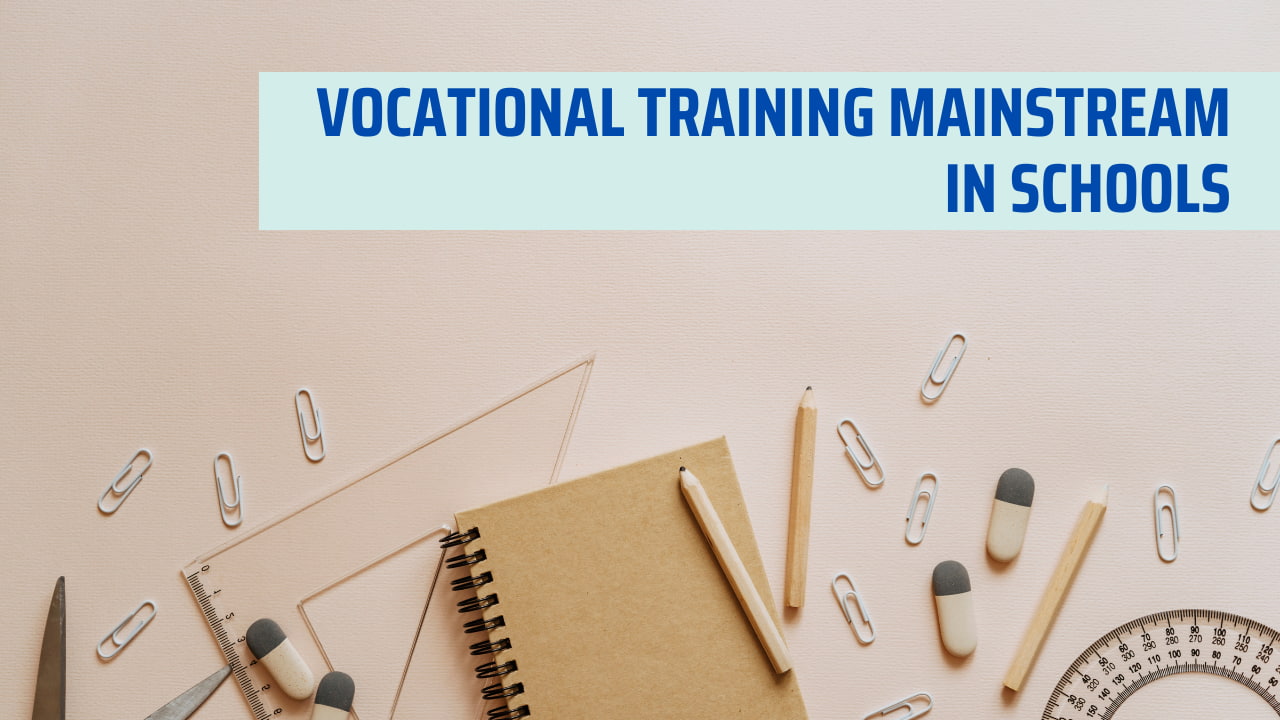The New Education Policy (NEP) 2020 has introduced many changes in the Indian education system. One of the key changes is the focus on vocational training, which aims to teach students skills that can help them in the real world. Let’s explore how this policy is making vocational training a regular part of school education.
What is Vocational Training?

Vocational training is education that teaches students practical skills for specific jobs or careers. Instead of just focusing on subjects like math, science, and history, vocational training helps students learn skills like:
- Carpentry
- Plumbing
- Electrical work
- Coding and programming
- Graphic design
- Agriculture
- Tailoring These skills can help students find jobs right after school or college, and even help them start their own businesses.
Why is Vocational Training Important?
In today’s world, many students finish their education but struggle to find jobs because they don’t have practical skills. Vocational training helps solve this problem by teaching students skills that are in demand. For example, learning how to repair computers or mobile phones can help students get jobs or start small businesses right in their community.
Vocational Training in the New Education Policy (NEP)
The New Education Policy aims to make vocational training an important part of every student’s learning experience. Here’s how the NEP is doing this:
1. Starting Vocational Training Early
Under the NEP, vocational training will start as early as class 6. Students will get a chance to learn different skills through fun and engaging projects. This will help students discover what they like and might want to do in the future.
2. Vocational Courses as Part of the Regular Curriculum
The NEP ensures that vocational courses are not just optional but a part of the regular school curriculum. This means that students will have the opportunity to learn vocational subjects alongside academic ones. Schools will partner with local experts, industries, and businesses to give students hands-on experience.
3. Focus on Skill Development
The policy emphasizes practical learning. Instead of just reading about skills, students will get to practice them. For example, students may get to spend time in workshops, farms, or computer labs to learn real-world applications of their skills. They will also have internships or apprenticeships with local businesses.
4. Multiple Skill Options
Students will be given many options for vocational courses. They can choose courses based on their interests and strengths. The policy plans to introduce more than 50% of students to vocational education by 2025, ensuring that many students gain valuable skills.
5. Linking Vocational Training to Higher Education
Vocational training will not end at school. The NEP has also planned for a smooth transition to higher education. Students who complete vocational courses in school can continue their studies in these areas in college or universities. For example, if a student learns about agriculture in school, they can pursue higher studies in agriculture technology later.
Benefits of Vocational Training in Schools
The NEP has brought vocational training into the spotlight because of its many benefits. Here’s how it can help students:
- Better Job Opportunities: Students with vocational training have practical skills that can help them get jobs faster.
- Confidence and Independence: Learning a skill makes students more confident and independent. They can use these skills to solve real problems.
- Financial Independence: Vocational training allows students to start earning money early, either through part-time jobs or small businesses.
- Reduces Dropout Rates: Since vocational training is hands-on and practical, it can make school more interesting for students. This helps reduce dropout rates as students stay engaged with their learning.
Challenges in Implementing Vocational Training
While the NEP has many goals for vocational training, there are some challenges:
- Infrastructure: Schools need proper tools, workshops, and labs to offer vocational courses. Some schools, especially in rural areas, may not have the required resources yet.
- Trained Teachers: Schools will need teachers who are experts in vocational fields. Training these teachers will take time.
- Changing Mindsets: In India, many parents and students see vocational training as less important than academic education. Changing this mindset will require time and awareness.